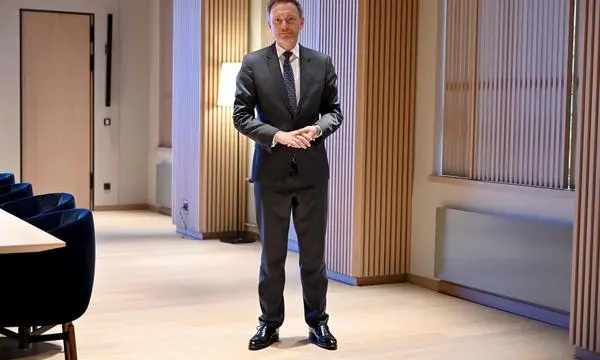The public deficit reached 5.8 % in 2024, slightly less important than announced – Liberation

The slippage is very real but the forecasts were more pessimistic. The public deficit reached 5.8 % of the gross domestic product (GDP) in 2024, said the National Institute of Statistics (INSEE), while The government was tabling on a figure around 6 %. It is still 0.4 point more than in 2023 for France, which remains one of the most deficit countries in the euro areabehind Greece and Italy.
The Minister of Public Accounts, Amélie de Montchalin, had recently suggested A slight better compared to forecastshighlighting a less deep than anticipated social security « hole » and the slowdown in operating expenses of local authorities. Its level remains very far from 4.4 % still hoped for in the fall of 2023, due to less dynamic than anticipated revenues. French debt increased by 202.7 billion euros over the whole of 2024, and 3.8 billion in the fourth quarter, reaching 113 % of GDP, or 3,305.3 billion euros.
« Our public debt has increased from 30 % to 110 % of GDP in 40 years » and the interests « Unfortunately already exceed our defense budget, and soon that of national education »alerted the governor of the Banque de France on Wednesday, François Villeroy de Galhau. « The cause of this French disease has been well known for too long: our public spending grows faster than our revenues » : With equivalent social model, expenditure exceeds more than 9 points of GDP those of neighboring countries, or some 260 billion euros, he argued. According to INSEE, public spending accelerated by 3.9 % last year to 57.1 % of GDP while revenue increased by 3.1 %, but less quickly than GDP.
The government plans to reduce the deficit to 5.4 % of GDP in 2025before returning under the European limit of 3 % in 2029. In order to prevent a possible new slip, it will bring together for the first time in April an alert committee associating in particular parliamentarians and local authorities. But its room for maneuver are limited in a fragmented political landscape and an economic environment under increased tension.
Savings have already been decided up to around 50 billion euros this year, and the American threat to raise customs duties risks slowing the activity more, against the backdrop of long -term interest rates, which increases the cost of debt. « Until then, our creditors did not finance us cheap but today, they ask for more expensive (…) because they consider us more risky »advance Sylvain Bersinger, chief economist at Asterès. The Banque de France lowered its growth forecast to 0.7 % for 2025. The government could align its own (today set at 0.9 %) or even descend more in the event of intense trade war.
It is in this difficult context that the government must find additional money to finance the increase in military spending, justified in France as in the rest of Europe by the Russian threat and the geopolitical reversal of Washington. In an interview with Le Figaro, published on March 2, Emmanuel Macron announced his wish to increase military spending « Around 3.5 % of GDP »against 2.1 % today, without increasing taxes, guidelines since the start of her mandate. A sign of the difficulty of the task, government spokesperson Sophie Prima said on Wednesday that the preparation of the 2026 budget was promised to « A nightmare as important financial difficulties (were) ».








